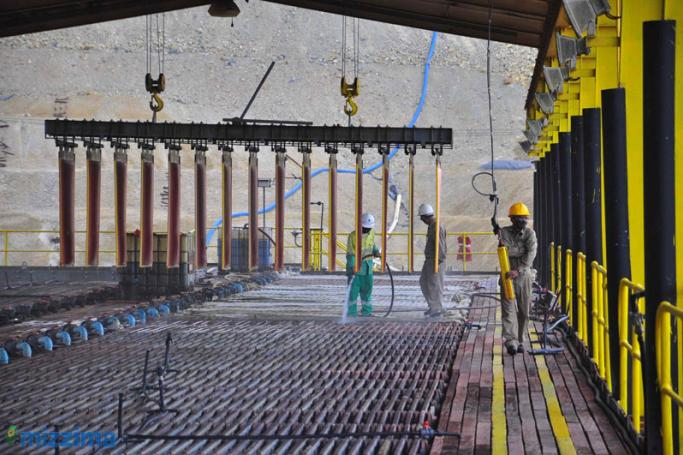Venezuela is the riskiest destination for Chinese to invest while Germany is the safest, followed by the United States and Britain.
Myanmar was ranked 40 out of 57 countries that were ranked as investment destinations.
Some countries that ranked high in terms of cooperation with China – such as Laos, Tajikistan, Sudan and Myanmar – were also among the riskiest places to invest.
Meanwhile, some developed countries that were less friendly were good places to invest, the report said.
The ranking was made by the Institute of World Economics and Politics of the Chinese Academy of Social Sciences, a government think tank which released its findings this week.
The report said China’s outbound investment rose 16 per cent to $104 billion in the first 11 months of 2015. It noted that some Chinese companies suffered huge losses on overseas deals.
Deals that went belly up include a controversial water dam project in Myanmar and a delayed copper mine development in Afghanistan.
The institute assessed 57 countries to provide a risk map for Chinese investors venturing abroad.
“As Chinese companies’ outbound investment is expanding, the risks associated with such investments are rising considerably,” the report said. “To make China’s overseas investments more successful, it is important to improve risk warning, risk recognition and proper risk management.”
A country’s overall risk was measured by its economic fundamentals, debt repayment abilities, social conditions such as internal conflicts and security, and political soundness.
The United States ranked 22nd in terms of its relations with China, but was the second safest place for Chinese to invest. Pakistan was regarded by the academy as China’s best friend, but was the 35th safest place to invest after mediocre scores for its economic and political fundamentals. It came below Uzbekistan, Iran and Greece.
The risk map comes as China rallies support for its “One Belt, One Road” development strategy and the Asian Infrastructure Investment Bank, which was legally established on Christmas Day and will soon make its first loan.
According to official statistics, China is close to becoming a net exporter of long-term funds. In the first 11 months of 2015, foreign direct investment into China was $114 billion, a rise of 1.9 per cent from a year earlier.
You are viewing the old site.
Please update your bookmark to https://eng.mizzima.com.
Mizzima Weekly Magazine Issue...
14 December 2023
Spring Revolution Daily News f...
13 December 2023
New UK Burma sanctions welcome...
13 December 2023
Spring Revolution Daily News f...
12 December 2023
Spring Revolution Daily News f...
11 December 2023
Spring Revolution Daily News f...
08 December 2023
Spring Revolution Daily News f...
07 December 2023
Diaspora journalists increasin...
07 December 2023
China blasts potential US investment curbs as 'economic coercion'












